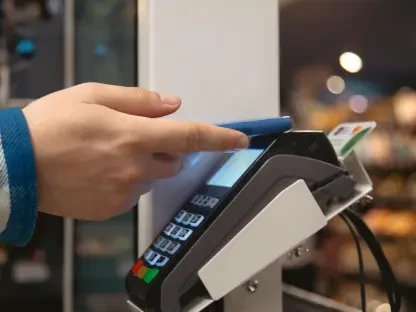In the rapidly evolving world of retail, staying ahead of shopper expectations and operational challenges is no easy feat. Today, we’re thrilled to sit down with Zainab Hussain, an e-commerce strategist with deep expertise in customer engagement and operations management. With years of experience helping retailers navigate digital transformation, Zainab offers a unique perspective on the latest trends and technologies shaping the industry. In this conversation, we’ll explore critical insights from recent research, including the decline in shopper satisfaction, the transformative power of AI and automation, inventory management hurdles, and innovative solutions driving profitability. Let’s dive into how retailers can adapt and thrive in this dynamic landscape.
How have recent studies highlighted the current state of shopper satisfaction, and what stands out to you about these findings?
I’ve been looking at the latest research, and it’s clear that shopper satisfaction has taken a hit for the second year in a row, with in-store satisfaction at 79% and online at 73%. What’s striking to me is that this decline reflects a growing gap between what shoppers expect and what retailers are delivering. Convenience, speed, and value are top priorities now, but many retailers are struggling to keep up with those demands while also managing operational challenges like out-of-stocks or slow service.
What do you think are the underlying reasons for this consistent drop in satisfaction across both in-store and online experiences?
I believe it comes down to a combination of rising expectations and operational friction. Shoppers today want seamless experiences—whether they’re browsing online or walking into a store. Inflation is also pushing nearly 80% of them to hunt for discounts and promotions, which adds pressure on retailers to cut prices without sacrificing quality. On top of that, issues like out-of-stocks or delays in getting help from associates are creating frustration. Retailers often lack the real-time systems or tools to address these pain points quickly.
How are shopper priorities evolving, especially in terms of balancing convenience with affordability?
Shoppers are laser-focused on getting the best bang for their buck while minimizing hassle. Convenience and speed are non-negotiable—think quick checkouts or easy online navigation. At the same time, value is huge; with economic pressures, most are prioritizing deals over brand loyalty. This means retailers need to streamline processes, like offering self-checkout options or same-day delivery, while also being competitive on price. It’s a tough balancing act, but those who get it right can build lasting trust.
With such a strong focus on discounts, how can retailers meet this demand without hurting their bottom line?
It’s a real challenge, but retailers can get creative. One approach is leveraging data to personalize offers—targeted promotions based on shopping history can drive sales without broad, margin-killing discounts. Another is focusing on operational efficiency to cut costs elsewhere, like using AI to optimize inventory and reduce waste. Building loyalty programs that reward repeat purchases with value-added perks, not just price cuts, can also keep customers coming back while protecting profits.
Turning to technology, how are tools like AI and automation reshaping loss prevention strategies in retail?
AI and automation are game-changers for loss prevention. About 87% of retail leaders see these tools as critical, and I agree. AI can analyze patterns in transaction data or video feeds to flag suspicious activity in real time, while automation—like RFID tags—helps track inventory more accurately to prevent shrinkage. These technologies reduce human error and catch issues before they escalate, saving retailers significant losses that would otherwise eat into their margins.
In what ways do these advanced technologies enhance the daily experience of retail associates?
For associates, AI and automation are like having a superpower. They can access real-time data on inventory or customer queries through handheld devices, cutting down on time spent searching for answers. Automation also takes over repetitive tasks—like restocking alerts or price updates—freeing them up to focus on customer service. When associates have the right tools, 87% say their work feels less stressful and more rewarding, which also boosts morale and retention.
Given that many associates struggle with timely access to information, what tech solutions can bridge this gap?
It’s a big issue—88% of associates face delays in getting the info they need. Mobile devices with real-time connectivity are a must. Tablets or wearable computers that sync with inventory systems can instantly show stock levels or product locations. Cloud-based communication tools also help associates reach managers or other team members for quick assistance. These solutions cut down on wait times, improve service, and make the whole operation smoother.
How does providing the right technology impact associates’ job satisfaction and performance?
When associates have effective tools, it’s transformative. Around 87% feel their jobs are more enjoyable because they’re not bogged down by manual processes or guesswork. Technology like mobile scanners or AI-driven insights lets them solve customer problems faster, which boosts their confidence and performance. It’s a win-win—associates are happier, and customers get better service, which ultimately drives loyalty and sales.
Inventory issues seem persistent, with many shoppers leaving stores empty-handed. What are the root causes of these out-of-stock problems?
Out-of-stocks are a huge pain point, with over half of shoppers walking away without everything they wanted. The root causes often lie in poor visibility and forecasting. Many retailers don’t have real-time data on what’s in stock across locations, so they can’t react quickly to demand. Manual processes or disconnected systems also lead to errors in tracking. It’s not just about having enough product—it’s about knowing where it is and getting it to the right place at the right time.
How can real-time inventory synchronization help tackle these persistent stock challenges?
Real-time inventory synchronization, which 84% of retail leaders prioritize, is a lifeline. It connects data across stores, warehouses, and online platforms, so everyone knows exactly what’s available at any moment. This means faster restocking, better demand forecasting, and fewer disappointed customers. It also helps avoid overstocking, which ties up capital. When systems talk to each other in real time, retailers can respond to trends instantly and keep shelves full.
Looking ahead, how do you see emerging technologies improving inventory visibility in the coming years?
Over the next five years, I expect technologies like computer vision, RFID, and generative AI to revolutionize inventory management. Computer vision can monitor shelves in real time to spot low stock, while RFID tracks items with precision throughout the supply chain. Gen AI can predict demand spikes by analyzing vast datasets, helping retailers stay proactive. Together, these tools will create a level of transparency that minimizes shrinkage and ensures products are always where they’re needed.
Can you explain how better inventory management translates into stronger revenue and profitability for retailers?
Absolutely. Research shows that optimizing inventory workflows can boost revenue growth and profitability by up to 1.8 percentage points. When you manage stock better, you reduce out-of-stocks, which means fewer lost sales. You also cut down on overstock, freeing up cash flow. Plus, accurate inventory data allows for smarter pricing and promotions, maximizing margins. It’s all about having the right product, at the right time, in the right place—driving sales while minimizing waste.
Why do retail leaders view inventory optimization as a key driver for boosting profits from online orders?
Online shopping is all about speed and reliability, and inventory optimization is critical to delivering that. About 38% of decision-makers see it as the top way to increase online profits because accurate stock data ensures customers get what they order, when they expect it. It reduces returns, cancellations, and shipping errors, which are costly. Plus, syncing inventory across channels lets retailers fulfill orders from the nearest location, slashing logistics costs and improving margins.
When it comes to in-store profitability, how do automation and real-time visibility stack up against other strategies?
Automation and real-time visibility are near the top for in-store profitability, with 39% of leaders prioritizing them. They edge out other strategies because they directly tackle core issues like out-of-stocks and inefficient workflows, which impact sales immediately. While digital ads and retail media networks—rated at 43%—are great for engagement, automation delivers instant operational wins. It’s about creating a frictionless experience that keeps customers coming back, which is harder to achieve with just marketing tools.
What is your forecast for the role of technology in shaping the future of retail over the next decade?
I see technology becoming the backbone of retail in the next ten years. AI and automation will not only solve operational headaches like inventory and loss prevention but also hyper-personalize the shopper experience through data insights. We’ll see more seamless integration of physical and digital channels—think stores as fulfillment hubs with smart shelves and wearable tech for associates. The retailers who invest now in scalable, intelligent systems will be the ones leading the pack, building loyalty in an increasingly competitive space.









